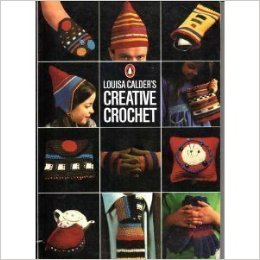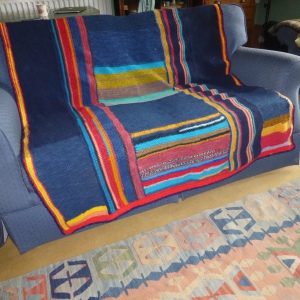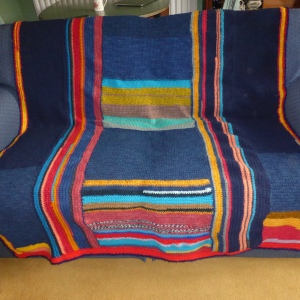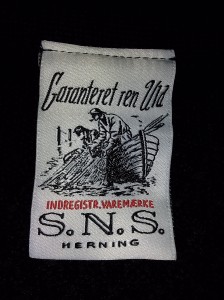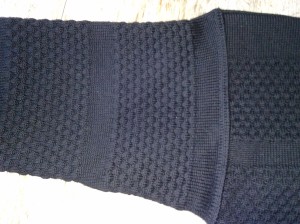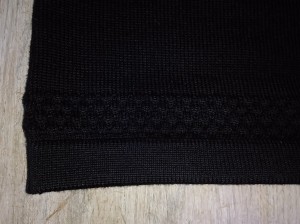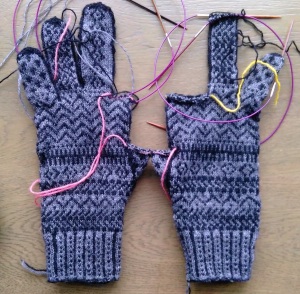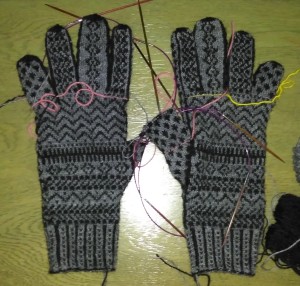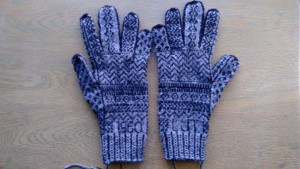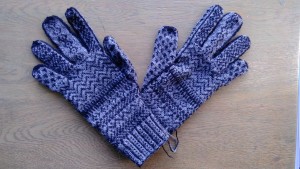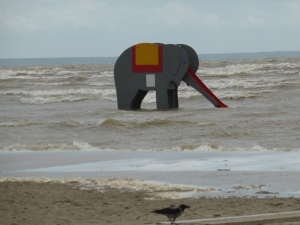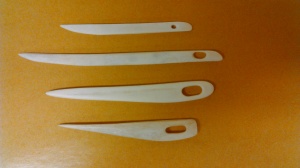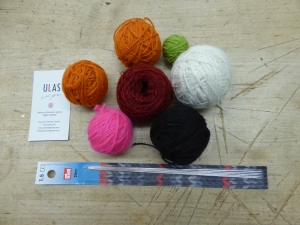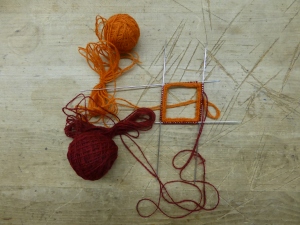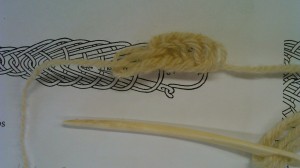It’s time I caught up on what I’ve been doing lately, which is mainly being in California for two weeks. Although it’s very warm there a lot of the time I was still able to fit in some knitting activity. However, I have to admit that I did not do a single stitch of knitting, not even on two long haul flights. In fact, I even almost left my knitting bag behind under my seat on the flight home. But luckily I had a dig around the debris of the flight and found it there.
A while ago June Hemmons Hiatt, author of the Principles of Knitting, was in the UK and we planned to meet up, having met at the inaugural Center for Knit and Crochet conference in 2102. That didn’t happen for various reasons so when I found out that June lives quite near where I go to visit my step daughter we agreed to meet. For those of you who are familiar with Principles of Knitting you’ll know that June is a total expert on knitting. Her book covers everything from how to actually make the stitches to all aspects of planning a project.
June is also working on producing knitting belts which are available from her web site. They are all top quality leather and hand made, so a real work of art and craft. Plus, using a knitting belt is a great way to knit.
So as well as having lunch, we talked a great deal of knitting ‘shop talk’, fairs and events. June was due to go to the New York State Sheep and Wool Festival in Rhinebeck, October 15th and 16th, so just coming up now, techniques, needles, and all sorts of textile-ly things.
Here’s June and I having had lunch:
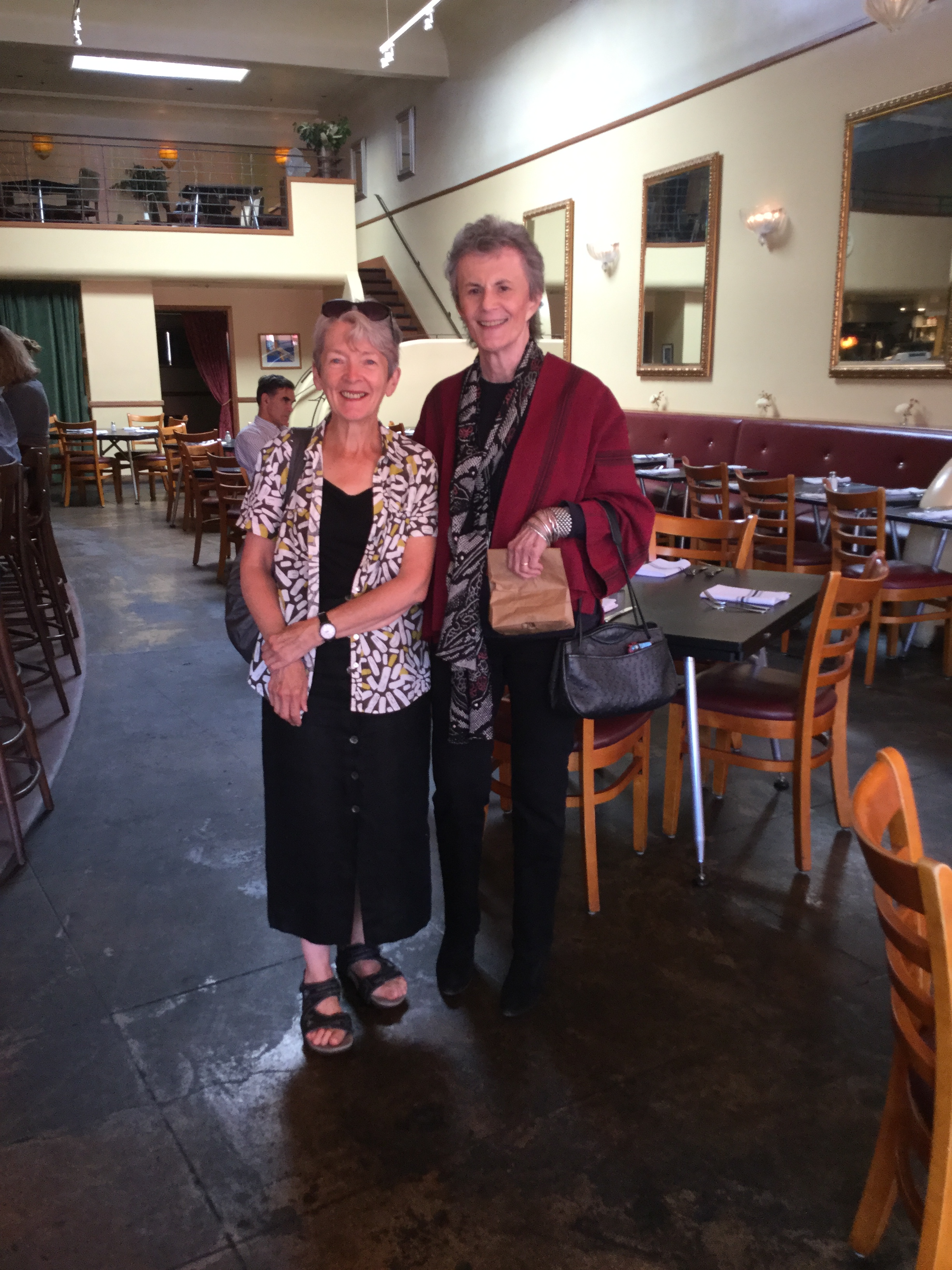
Then June introduced me to a unique shop and gallery called Lacis which has haberdashery, tools, books, textiles and costume. It really is amazing, and if I wasn’t used to seeing huge quantities of old and vintage textiles in the Knitting & Crochet Guild Collection, where I volunteer, I would have been even more amazed that I was. I have never seen such a selection of thread, needles, gadgets, patterns, pins, ever. And that’s including John Lewis haberdashery in its heyday and Duttons for Buttons and all those wonderful places down side streets in London ….
When I’d recovered from that, at least a week or ten days later, I went to visit A Verb for Keeping Warm, a shop and centre for all sorts of textile activities in Oakland, so about 30 minutes away from where I was staying and not so far from Lacis. If you have a look at the web site you get a sense of the place and what they do there. Have a look at the pictures of the outdoor space at the back of the shop – it is quite special. I asked if my partner could sit here while I browsed and it was fine. We were both happy.
Here’s some pictures:

Natural dyed yarn and dried marigoldsfor dyeing with in the outdoor space
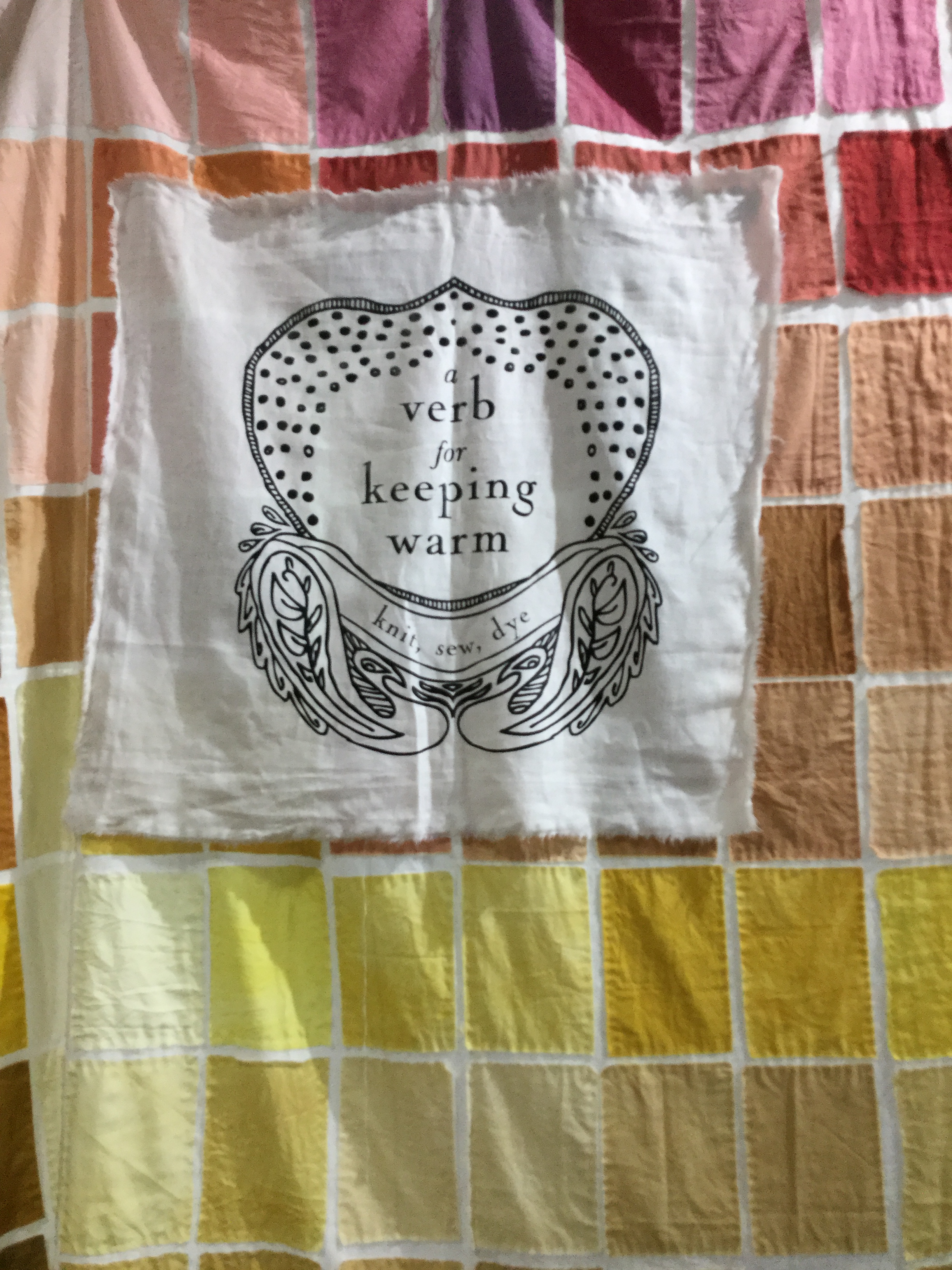 A hanging showing natural dyed fabrics in the shop
A hanging showing natural dyed fabrics in the shop
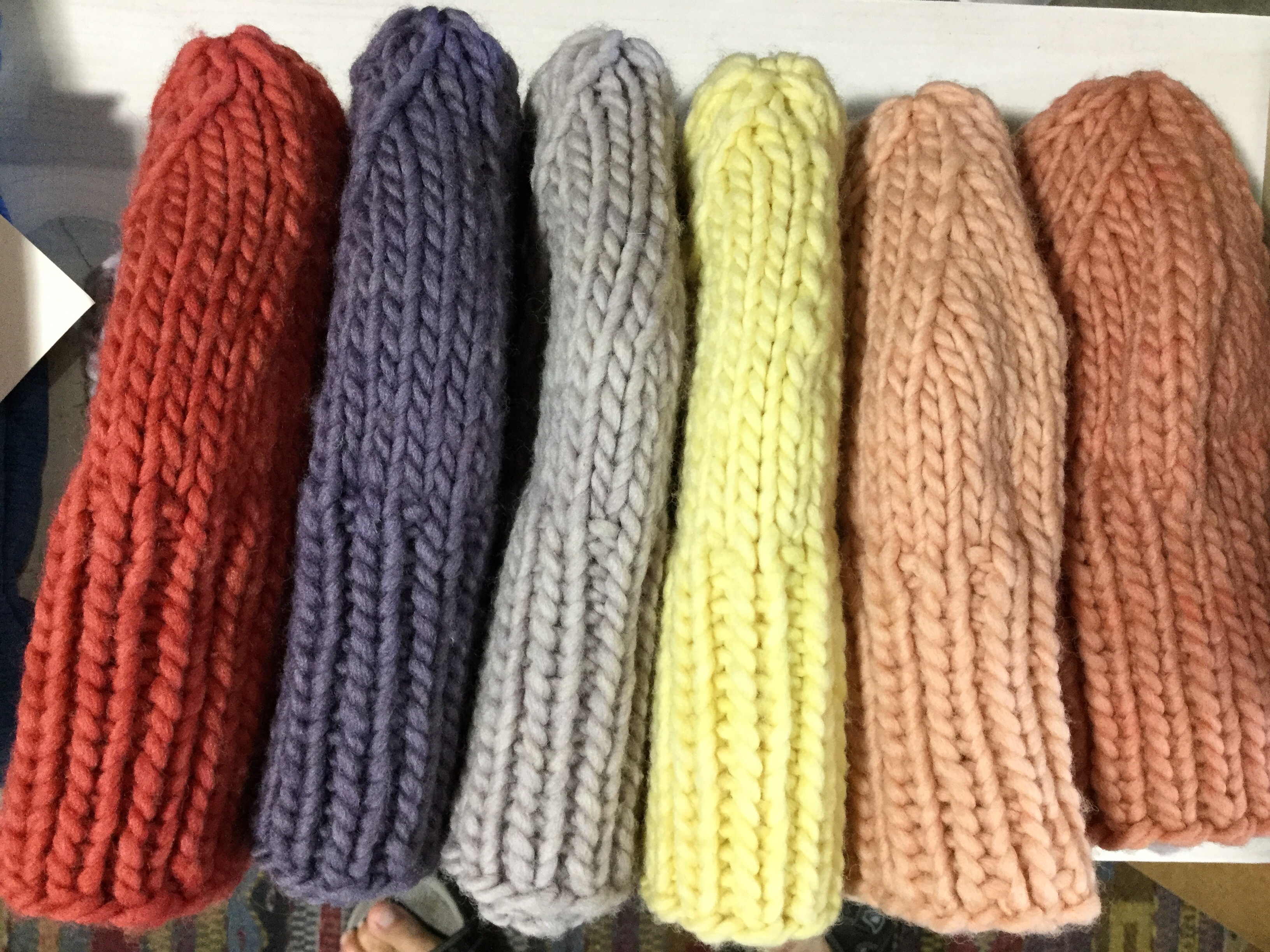 Hats, natural dyed wools
Hats, natural dyed wools
Verb has knitting and spinning and dressmaking/quilting supplies so there was a lot to look at and all of it beautiful – lovely things, well presented, plus some that I hadn’t seen before, like this magazine from Canada, Uppercase. I bought this edition, more or less for the image on the front cover, which looks like a patchwork quilt, but made of pieces of painted wood from salvaged houses. You can see more of them at the artist’s web site.
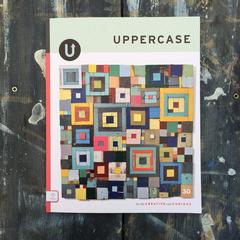
I also bought a copy of the natural dyeing book, written by the Verb’s owner, Kristine Vejar. A clever move, calling it The Modern Natural Dyer, as I have several books on natural dyeing, and have done some natural dyeing, but I obviously need an update. I left this in California with my daughter. I’ll get it back next time I visit if she hasn’t used it by then.
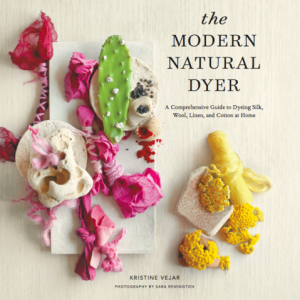
And the last couple of things I bought (remember, I never buy yarn, and I don’t buy books when I’m abroad as they are too heavy to carry home) was a skein of Brooklyn Tweed yarn in a sludgy green that is my favourite colour more or less, and a Brooklyn Tweed book. I look at BT books on line and they are wonderful – beautifully produced and photographed and this one is no exception. It will probably be a present, as I really do not need another knitting book. I even forgive the incorrect spelling of Woolens. Joke.

And finally, I bought some Blue Faced Leicester tops in Verb, as the spinning wheel was out at my daughter’s house. I took the wheel over there after my mother died, over ten years ago, literally in a box, held onto wheels with some bungies. It travelled as checked in baggage. Anyway, the white tops were quite ok to spin with, although not a nice as some grey Gotland which had come from the local knitting shop in Lafayette. Here’s me spinning on a Hebridean wheel in California:
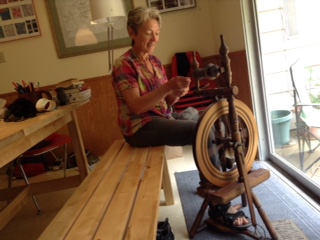
And that’s all for now. Thanks for reading if you got this far.















 A hanging showing natural dyed fabrics in the shop
A hanging showing natural dyed fabrics in the shop Hats, natural dyed wools
Hats, natural dyed wools



